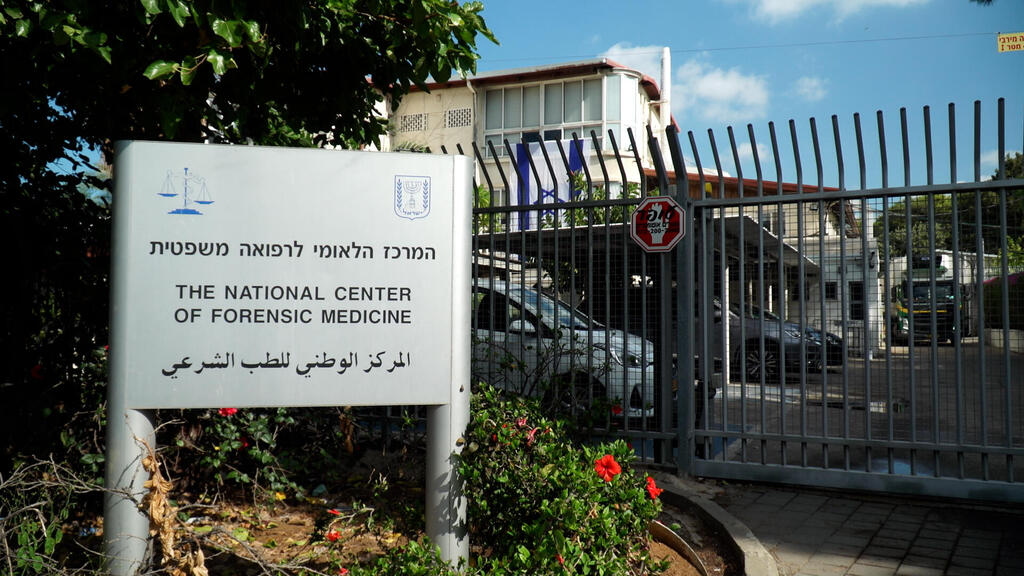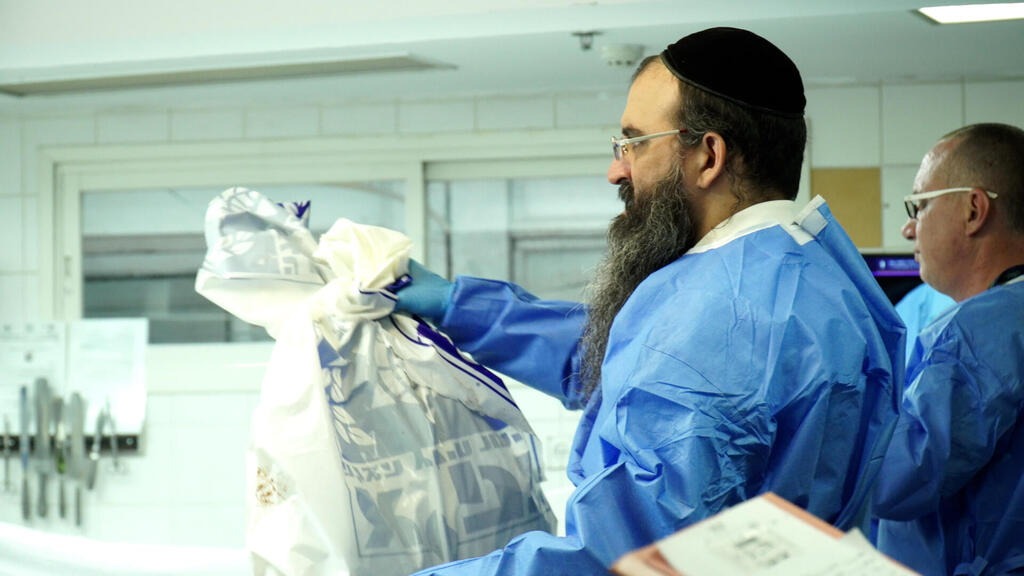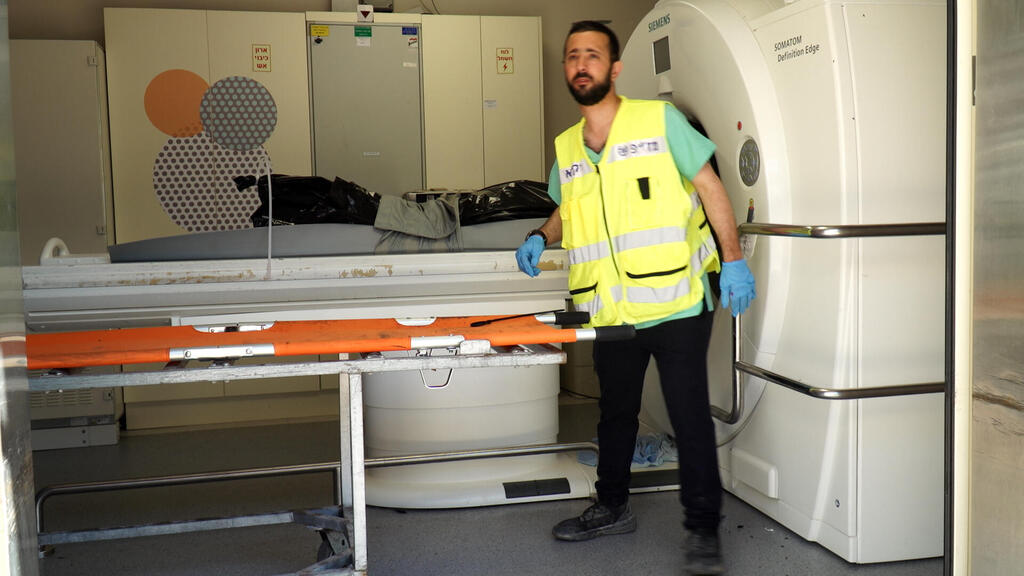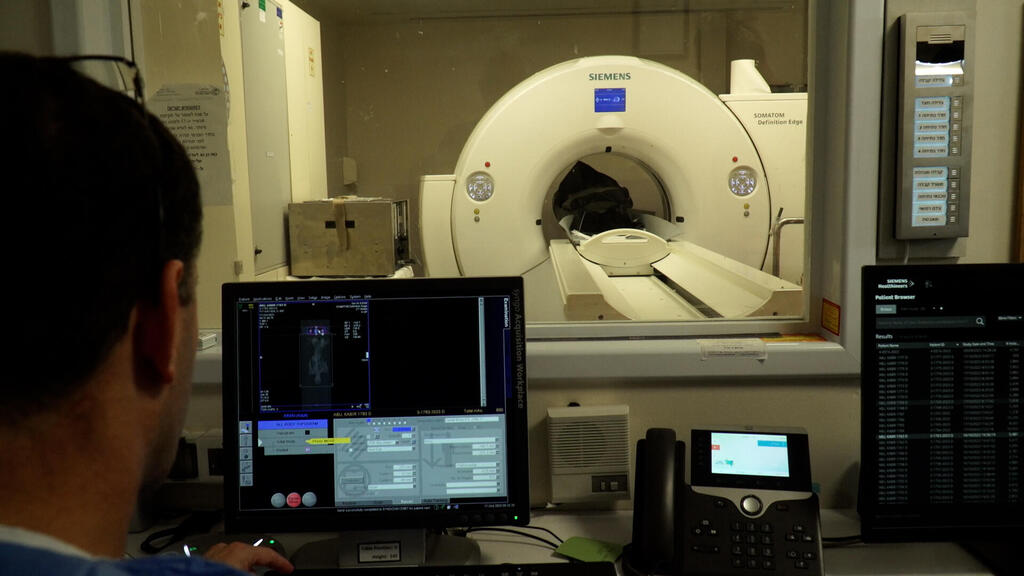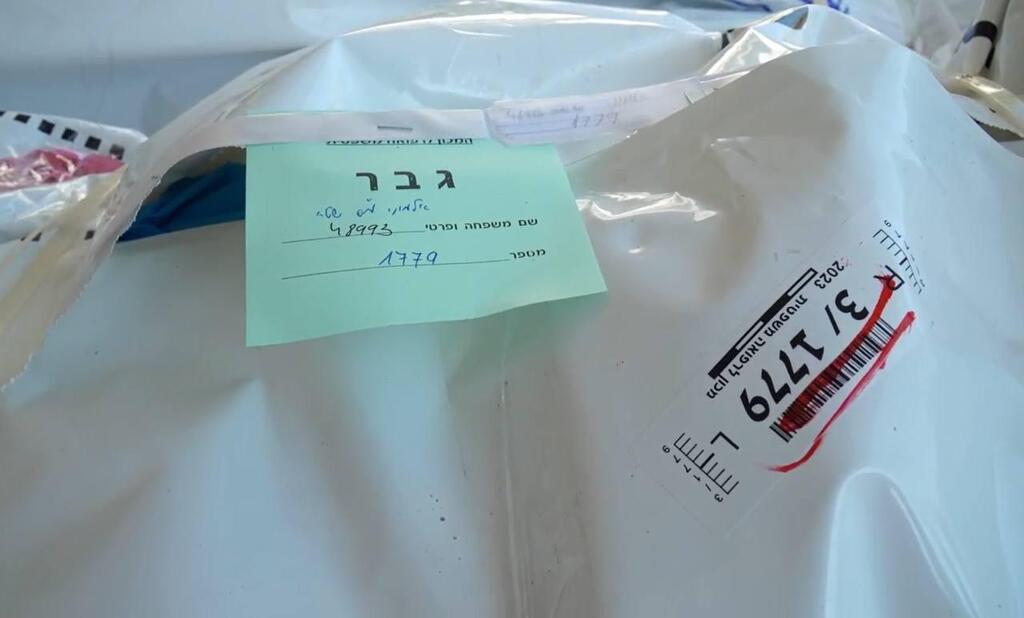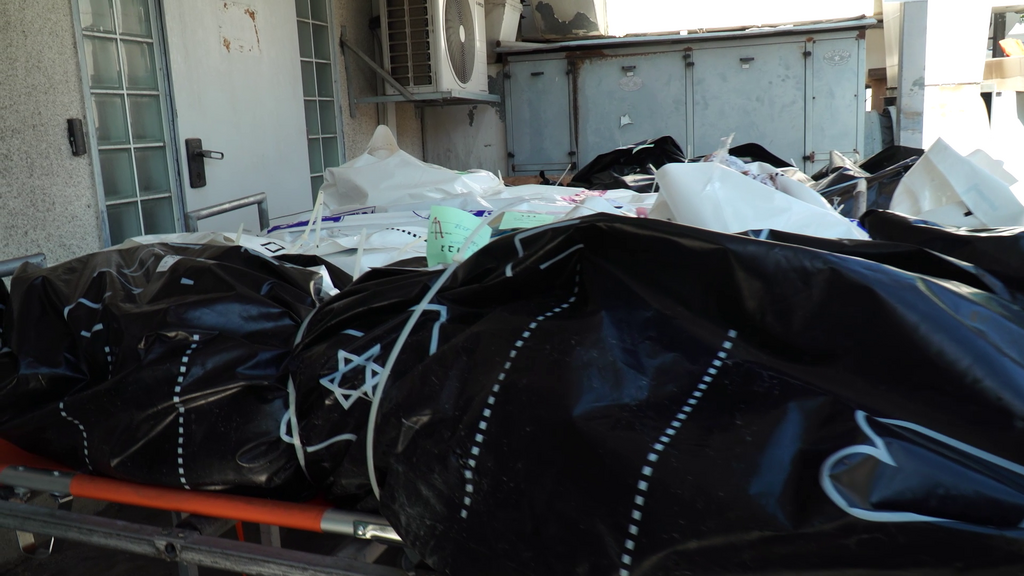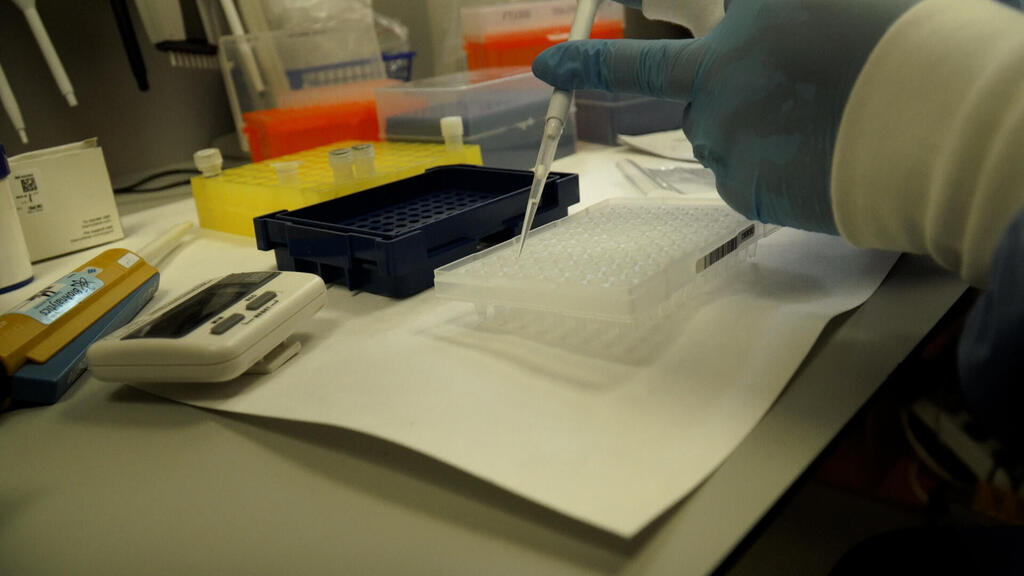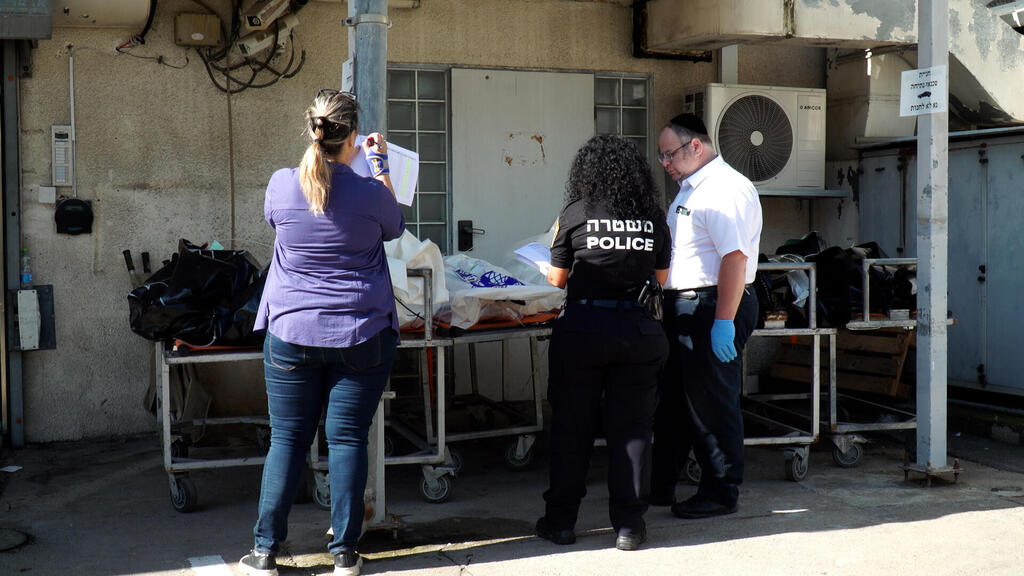Warning: Highly graphic images!
Abu Kabir
(Video: Eli Dasa, editing: Shai Knafo )
In the past two weeks since the war began, approximately two hundred unidentified bodies have been brought to the National Center of Forensic Medicine. Advanced technology is being employed to examine these remains in an attempt to identify them.
Read more:
"I've been a forensic pathologist for over 30 years, so it's rare for anything to truly shock me", Dr. Kugel, the institute's director. "I witnessed it all, I scrutinized every detail, observing bodies subjected to horrifying abuse, from adults to children, in various states of decay. But nothing, nothing in my entire career, prepared me for the horrors we've seen since that fateful Black Saturday on October 7.
"It's unimaginable. It's evil incarnate. We found a father, embracing his little boy from a charred lump, both victims of close-range gunshots. The perpetrators didn't stop there; they burned the bodies and even wrapped iron wire around them. To call it 'cruelty' would be an understatement. It's a heinous crime against humanity, a chilling testament to the depths of human darkness".
"We found a father, embracing his little boy from a charred lump, both victims of close-range gunshots. The perpetrators didn't stop there; they burned the bodies and even wrapped iron wire around them"
The institute, under the jurisdiction of the Health Ministry, is the sole national entity authorized to deliver forensic medicine services in Israel. Last week, it allowed access to camera crews from the Foreign Ministry and foreign journalists, aiming to expose the world to the atrocities inflicted by the terrorists upon their victims. Our visit to the facility was challenging, primarily due to the distressing sights we encountered and also because of the evident neglect that pervaded the surroundings.
The institute is consistently underfunded by both ministries of health and finance. On ordinary days, the professional staff comprises just seven doctors who handle approximately 2,000 cases annually. Moreover, the working conditions are challenging: the institute occupies an aged building, over a century old, that urgently requires renovation. Despite these challenges, the institute stands among the world's best, a testament to the expertise and dedication of its staff, as well as the utilization of cutting-edge technology and advanced means of identification.
"Bodies that pose identification challenges are forwarded to us from the national corpse collection database", explains Dr. Nurit Bublil, head of the DNA laboratory at the institute. "In our labs, we can decode DNA samples from minute sources such as a piece of a fingernail or any other small tissue that proves difficult for sampling".
'She was sewn up from her skull down to her ankles'
Since the onset of the conflict, ZAKA trucks have been arriving consecutively, each transporting around 30 bodies wrapped in black sacks, each sack labeled with a number. "When questioned about the total number of bodies received thus far, I find myself compelled to provide an uncertain figure due to the constantly shifting reality", notes Dr. Kugel. "To date, approximately 200 bodies arrived by the middle of last week, and another truck carrying 34 bodies is en route."
At the institute, ZAKA volunteers, stationed on duty, carefully unload bodies one by one from the truck onto stretchers. These bodies are then placed within the institute's courtyard, designated for those awaiting identification. Nearby, bodies that have already been examined and marked for release are laid out. A diligent ZAKA volunteer meticulously documents every body's entry and departure.
Each bag undergoes a series of inspections, beginning with the CT room housed in a small building within the yard. Here, a doctor and a ZAKA volunteer position the body on a bed while it remains enclosed in a black bag. Subsequently, they exit the room, allowing the doctor to activate the CT machine, decipher findings and capture images. Frequently, the bag contains not an entire body, but only bones or ashes.
Dr. Alon Crispin, the director of the identification through imaging array, explains, "I can identify changes made to the body, such as surgeries and treatments the deceased underwent, through the bag. The gathered data is then transmitted to law enforcement and the Health Ministry, who have established a collaborative Homefront Military Liaison (HML) in Airport City. They cross-verify this information with details provided by families and health insurance funds, striving to consolidate and accurately attribute the information about the deceased to a specific individual".
Dr. Chen Kugel stated, "It's not possible to identify all the bodies. Some may remain unidentified for a long time, and the longer it takes to find them, the more challenging their identification becomes."
After the CT scan, the body is transferred to the operating room, where it is removed from the bag and its state is documented. To expedite the identification process, the teams handle multiple bodies simultaneously.
"Currently, there are two bodies in the room", described Dr. Kugel. "On the right, there's a ten-year-old girl; on the left, an elderly man. Both were shot from a very close range, and their bodies are in an advanced state of decay".
A ZAKA volunteer exits the room visibly distressed and trembling. "She was just ten years old, no older, and they fired 15 bullets at her," he shares. "They performed extensive stitching from her skull to her ankle and even severed her pinky". Despite the bodies' challenging state, staff members believe that identification will still be achievable.
"She was just ten years old, no older, and they fired 15 bullets at her. They performed extensive stitching from her skull to her ankle and even severed her pinky". Despite the bodies' challenging state, staff members believe that identification will still be achievable
In a different workspace, the lifeless form of a young man is found. Among the team of doctors conducting the examination is Dr. Judy Melnik, a forensic expert who was born in Israel and moved to the United States with her family when she was five years old. She arrived at the institute from New Zealand, alongside other doctors from different countries, supported by the APF organization, which aids nations facing national crises.
Reflecting on her 21 years of experience, she recalls, "I was part of the team that identified the victims of the September 11, [2001 attack]. I'm accustomed to dealing with numerous bodies without becoming emotional, but this situation is exceptionally challenging".
The bodies that have been identified are positioned in the hallway. Police officers arrive to transport them and notify the families of the identification, making arrangements for the deceased to be laid to rest. Unidentified bodies are transported back to the national mortuary repository in Shura camp, south of Ramla. There, they will be stored until any relevant information is cross-referenced and further findings are obtained.
Generate an anthropological overview
Utilizing cutting-edge technology, the institute employs advanced methods to identify the bodies. Tzipi Kahana, a forensic anthropologist, elaborates: "we carefully examine remains of burnt or fractured bones, endeavoring to establish an anatomical correlation. In other words, we develop an anthropological profile, enabling us to determine whether the bone originates from a male or female, a child or an adult, and estimate the age".
In the DNA laboratory, researchers are working to interpret results obtained from samples collected at Shura camp, IDF bases, and the institute's autopsy rooms, all of which remain unidentified. Dr. Bublil explains, "The material in the test tube undergoes intricate laboratory procedures, utilizing advanced technology to simulate biological processes occurring in the living body from the material extracted from the deceased".
Typical results are sent to the police DNA database for comparison, while findings that couldn't be deciphered are further processed at an identification institute using alternative methods. Dr. Bublil states, "so far, we have successfully generated over 99% of standard samples from all the materials we've received."
Dr. Kugel elaborates, "Radiological methods are used for detection. We attempt to identify which fragment corresponds to another, endeavoring to piece together and match these parts to a specific individual". Radiologists place the findings on a slide, where they meticulously assemble the fragments of the human puzzle.
'Not all the bodies found will be identified'
The institute was alive with a flurry of people and intense activity, all dedicated to one objective: expediting the identification process as much as they could. The teams diligently labor from morning until midnight, striving to work with utmost speed.
"We utilize every bit of information available, holding onto every fragment that can be deciphered", Dr. Kugel states, "and we persist without pause, driven both by our professional commitment and the patriotic spirit uniting us all".
"We also rely on the spirit of civic volunteerism, and we are fortunate to have a flood of volunteers assisting us", adds Dr. Kugel. "Radiologists from hospitals all across the country have willingly joined us. However, we still require doctors, medical anthropologists, and other medical personnel."
Some of the findings obtained from opening the sacks are visible on his computer monitor. One slide displays a collection of bone fragments. "We were able to determine that they belonged to a single individual", he says.
On another slide, a skull and two left feet are identified, indicating that the sack contains organs from more than one person. "I must emphasize that not all the bodies found will be identified", says Dr. Kugel. "Some of them, including children, might not be identified in the near future. The longer it takes to find them, the more challenging it becomes to identify them, as all that remains are ashes and soot".





